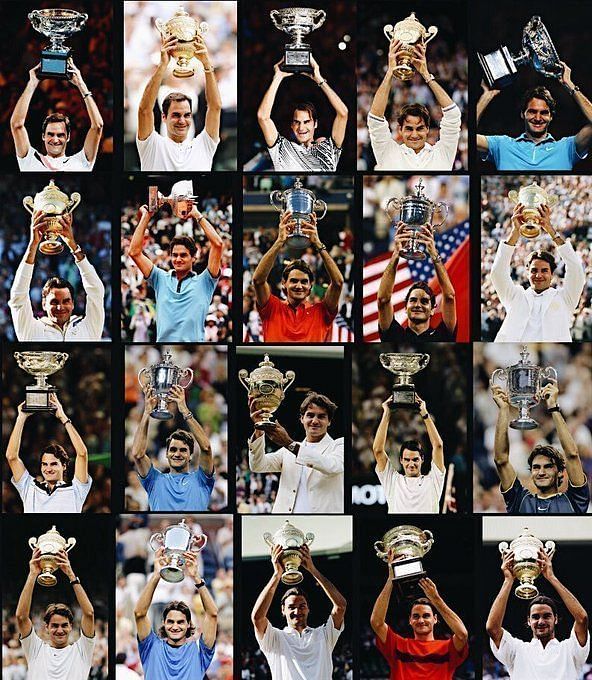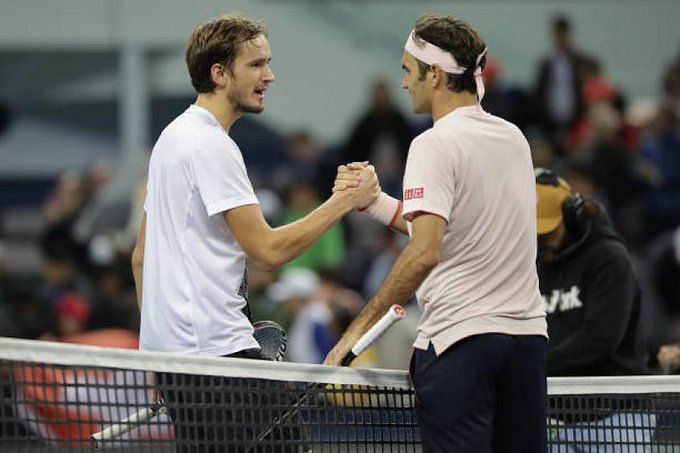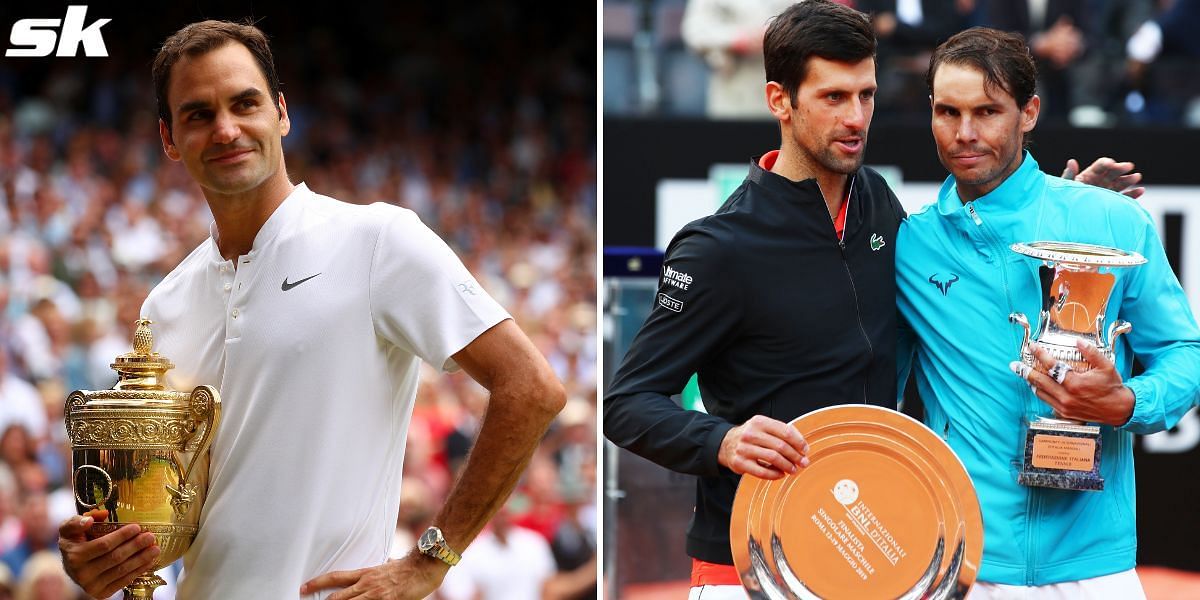
Is Roger Federer still in contention to be the GOAT?
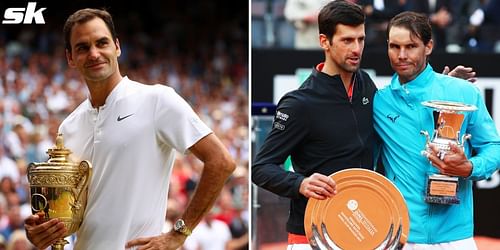
In the 2000s, it seemed like a foregone conclusion that Roger Federer, and only Roger Federer, would become the tennis GOAT. Having won his first Grand Slam at the 2003 Wimbledon Championships, the Swiss went on to win 11 of the next 17 Majors, including five consecutive Wimbledon and US Open titles.
If we extend the streak to the 2010 Australian Open, the former World No. 1 won 16 of the 27 Grand Slams starting with his 2003 triumph at SW19. He finished the year as the top-ranked ATP player for four years on the trot between 2004 and 2007, and after dropping to World No. 2 in 2008, rose back to the top in 2009.
In that eight-year period from 2003 to 2010, the 40-year-old won 585 matches while losing only 91 times (win percentage of almost 85%), reaching 84 finals and winning 62 of them. He also overtook Pete Sampras in the Slam race, set a record of 237 consecutive weeks atop the ATP rankings and completed the Career Grand Slam. In short, he achieved everything that tennis had to offer.
Until, of course, Rafael Nadal and Novak Djokovic entered the picture.
Roger Federer's poor head-to-head record against his rivals in the GOAT debate is a bad look for the Swiss
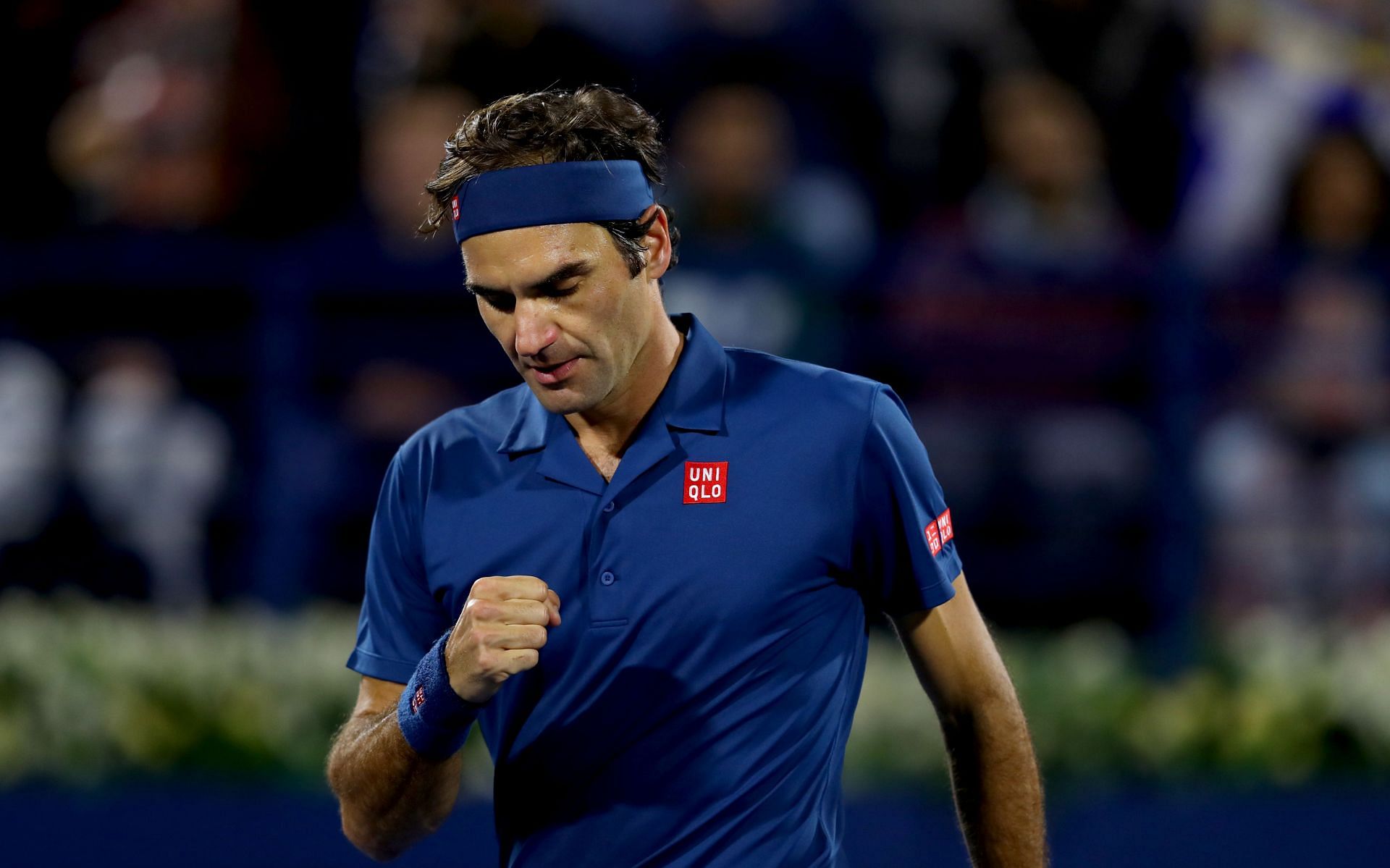
Roger Federer's head-to-head record against Rafael Nadal reads 16-24. Against Djokovic, it is a slightly more respectable 23-27. Can someone really be under consideration for the GOAT tag when they have a negative head-to-head record against two players in the same era?
Now, it wouldn't matter if the 40-year-old had more Majors than both of them. But seeing as how the Spaniard has gone one ahead already, and the odds are that the World No. 1 will also do so in the future, it is not a good look for the Swiss.
For reference, Pete Sampras, the man who was tipped to be the greatest player before he was eclipsed by Federer, has a positive head-to-head record against all 15 of the players who have faced him the most. That includes Andre Agassi (eight Grand Slams), Boris Becker (six Grand Slams) and Stefan Edberg (six Grand Slams). In other words, he dominated his era without question. Objectively.
The same goes for 11-time Major winner Bjorn Borg, who has a positive head-to-head record against his contemporaries like Jimmy Connors (eight Grand Slams) and Ivan Lendl (eight Grand Slams). Lendl has a lead over Becker, Connors and John McEnroe (seven Grand Slams).
The point is, head-to-head records are cherry-picked, no doubt, but they cannot be ignored and they serve a purpose. One cannot be the GOAT if they aren't the GOTT (Greatest of Their Time).
What, then, are the reasons to still have Roger Federer in the GOAT debate?
The most compelling reason to still have Roger Federer in the GOAT debate is this: His peaks were far higher than either Rafael Nadal or Novak Djokovic. The Swiss won his 20 Majors across 11 separate years. He has won more than one Slam in a season on seven occasions.
Nadal has won his 21 Slams across 15 separate years, and has won more than one Major in only five seasons. Djokovic, on the other hand, is more similar to Federer. The Serb's 20 Grand Slams have come across 11 separate years, and he has won multiple Slams in six seasons. In other words, they have been more consistent in their trophy haul, more so than the former World No. 1.
But the heights Roger Federer reached in the four-year spell between 2004 and 2007 have never been repeated by either. And chances are they will never be achieved in the future. This is further evidenced by Federer's 237-week stay as the World No. 1.
Talent is not synonymous with success, and nor should it be
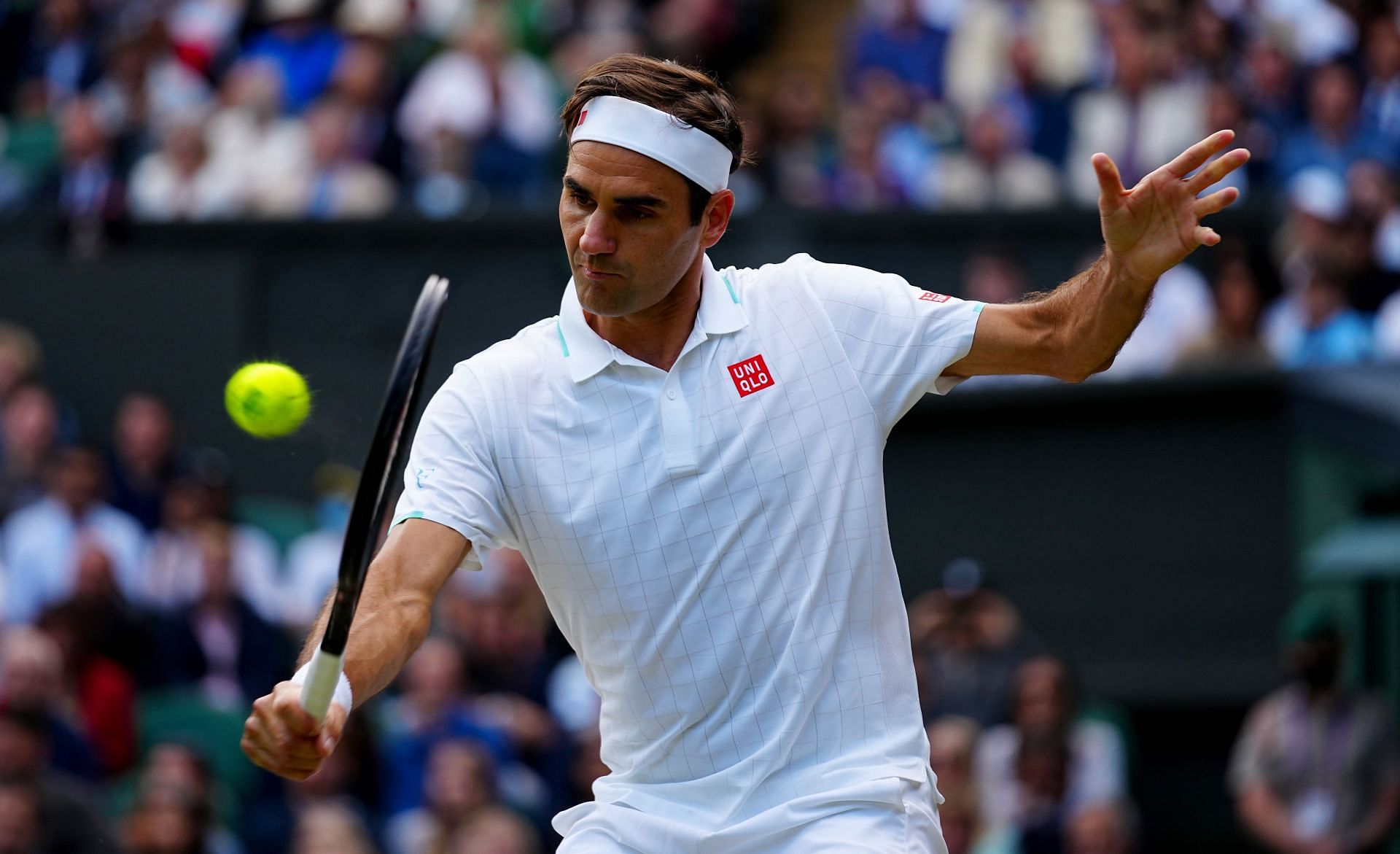
If the debate were simply about which tennis player was the most talented of all time, there is no doubt that Roger Federer would be the clear winner. There has been enough testimony from players, coaches, pundits and fans to secure the argument in his favor.
Over the years, plenty of talented people have picked up a tennis racquet. There have been hundreds of players in the past whose potential seemed unending. But potential alone makes a player not.
The GOAT tag is not conferred on players based on how they looked on their best days or how graceful they looked when the wind conditions were perfect. Instead, the greatest tennis player is the one who wins the most. Period. It is hard to compare across eras, but even then that should be the yardstick for how we measure greatness. It is the most objective standard.
In 1996, Chess legend Bobby Fischer introduced a new format of chess called "Chess9LX" or "Chess960", wherein the starting positions of the pieces are randomized for every match. Fischer's goal was to get rid of the monotony in the game brought about by mere memorization of opening moves. He wanted to replace it with creativity and talent. In other words, he wanted a way to reward raw talent.
But tennis does not have a 9LX version yet. Unless we do, and we probably never will, the GOAT will be one with the numbers on his side. Federer, who is a sight for sore eyes on the tennis court, does not have the numbers on his side. That is not an opinion. That is just the facts.
The good thing is, the Swiss hasn't hung up his racquet yet. He may return soon and continue playing for the next 10 years. He may end up winning 10 more Grand Slams. He may end up beating Nadal and Djokovic left, right and center to get there. But unless he does that, it is time to concede that he is no longer in the top two in the GOAT debate.
Now, the MTOAT (Most Talented of All Time)? That is his, and his alone.
